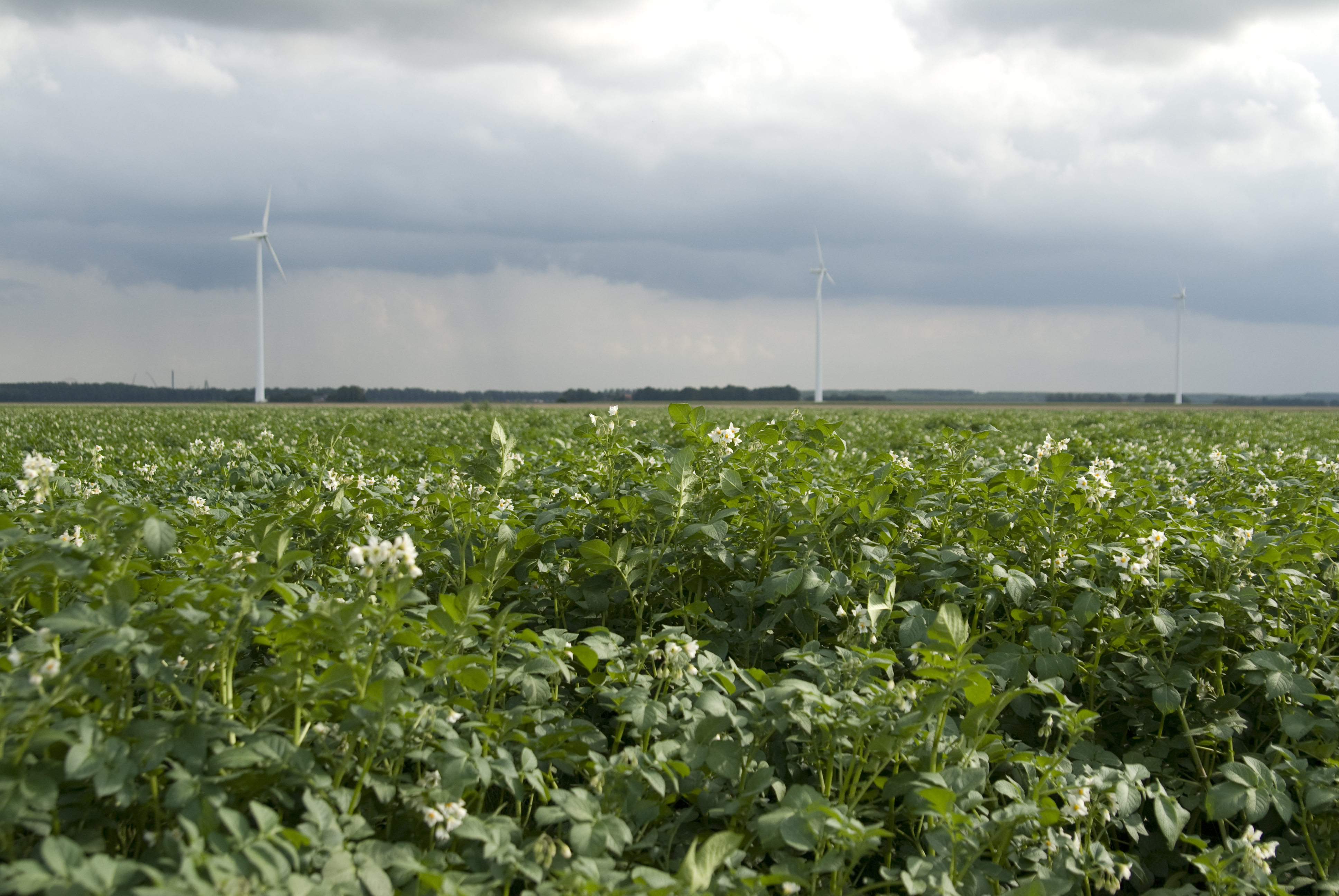Growing process
From tuber to potato
August
In August we start with fertilizing the soil. Usually this will be done with organic fertilizer (for example chicken manure). As a result, the soil will become rich in nitrogen. Nitrogen is one of the most important nutrients that is needed for the growth of the potato plant and de development of the tubers. Potassium and phosphate are also important nutrients.
October
The land gets ploughed to around 30 centimetre in depth. This also ensures that weeds and plant remains will disappear into the soil.
Winter:
When the moisture in the soil freezes clods will break down, this is ideal for the structure of the soil. A well crumbled soil ensures that the potato plants will rise faster above the ground when spring arrives.
March
The seed potatoes arrive at the farm. Before planting they will be stored for a while in the barn. During storing the potatoes will develop offshoots, which will ensure a quick rise from the potato plant.
April
The fields are prepared by loosening up the soil, levelling it out and fertilizing it. The planting machine will lay the seed potatoes down and shove soil over it. This is how the rows (see first picture) are made.
May
The plants come up out of the soil, so the rows will be made higher to ensure that the plants have enough space to produce

tubers. Harvesting will also be easier as a result of the higher rows and weeds will disappear into the soil.
Summer
One more round of fertilizing and all summer the farmer will check the crops for pests and diseases. If necessary, he will intervene to save his crops.
September
With the help of a harvester the potatoes will be collected from the ground. They will be transported to a special storage barn. It’s dark and very well ventilated in this barn, with a temperature of 5 degrees Celsius. The potatoes will be stored until processing, this can take up to 11 months!


